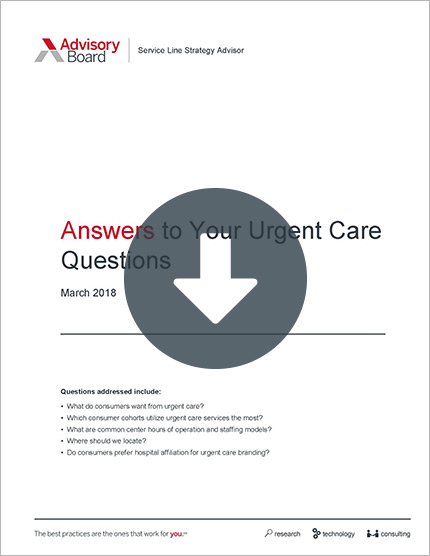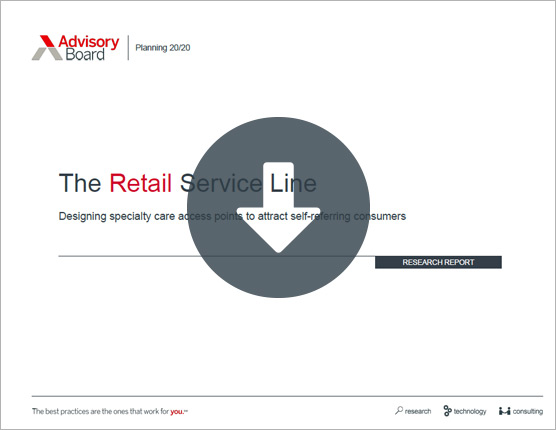Auto logout in seconds.
Continue LogoutTraditional primary care doctors are becoming "scarce" amid the emergence of urgent care centers and retail clinics, as well as proliferating mergers between health care providers, Reed Abelson and Julie Creswell write for the New York Times.
Get ready-to-use slides on the latest health care trends in 2018
According to a Health Care Cost Institute analysis of health insurance data released earlier this year, office visits to primary care doctors decreased by 18% from 2012 to 2016, even as specialist visits increased.
Among the pressures: The convenience of urgent care
According to the Times, some U.S. residents find it easier to seek care at an urgent care center than at a primary care provider. According to the consulting firm Merchant Medicine, there are about 12,000 urgent care centers in the United States.
Matt Feit, a screenwriter in Los Angeles who visited an urgent care center eight times in 2017, said, "You call the doctor's office to book an appointment. They're only open Monday through Friday from these hours to those hours, and, generally, they're not the hours I'm free or I have to take time off from my job." He continued, "I can go just about anytime to urgent care, and my co-pay is exactly the same as if I went to my primary doctor."
Mergers, acquisitions create further pressures
Increasing mergers in the health care industry also are putting pressure on smaller physician practices. The Times reports that potential deals between Walmart and health insurer Humana, as well as between CVS Health and health insurer Aetna, further threaten existing primary care providers by potentially capturing the patient populations enrolled in health plans sold by the insurers.
Michael Munger, president of the American Academy of Family Physicians, said, "With all of these deals, there is so much we don't know." For example, he asked, "Are Aetna patients going to be mandated to go to a CVS MinuteClinic?"
At the same time, UnitedHealth Group has ramped up its primary care offerings. The company employs more than 30,000 physicians and runs MedExpress, a chain of standalone surgery and urgent care centers. (Daily Briefing is published by Advisory Board, a division of Optum, which is a wholly owned subsidiary of UnitedHealth Group. UnitedHealth Group separately owns UnitedHealthcare.)
In addition, hospital groups increasingly are purchasing physician practices. According to the Times, hospital groups employed 43% of primary care doctors in the United States in 2016, compared with 23% in 2010. Hospital groups also are opening their own urgent care facilities. Jeffrey Le Benger—CEO of Summit Medical Group, a large independent physician group in New Jersey—said, "There is huge consolidation in the market right now," adding, "Everyone is fighting for the primary care patient."
A push toward telemedicine, as well as companies looking to open their own clinics to treat their employees, also have threatened traditional primary care practices, the Times reports.
Are urgent care centers actually a good primary care solution?
But some observers have raised concerns about the quality of care U.S. residents are receiving at urgent care facilities and retail clinics and questioned whether such centers reduce health care costs.
For instance, Susan Kressly—a pediatrician in Warrington, Pennsylvania—said she found that some of her patients had received inappropriate care at retail clinics and urgent care centers. "Some of the patients with coughs were being treated with codeine-based medicines, which is not appropriate at all for this age group," she said.
Separately, Mark Werner—a consultant for the Chartis Group, which advises medical practices—said, "None of the research has shown any of these approaches to delivering care has meaningfully addressed cost."
But Ateev Mehrotra, an associate professor of health care policy and medicine at Harvard Medical School who has researched the retail clinics, pushed back on these concerns, saying, "The quality of care that you see at a retail clinic is equal or superior to what we see in a doctor's office or emergency department."
How traditional primary care practices are responding
Nevertheless, some primary care doctors have changed their practices in an effort to compete with new urgent care and retail clinics.
For instance, Carl Olden—a primary care physician in Yakima, Washington—and his partners three years ago set up a clinic similar to an urgent care facility across the street from their primary care office. The practice was able to keep its patients and access their electronic health records for visits at the urgent care facility, Olden said. He added, "And we've had some folks come into the clinics who don't have their own primary care physicians. So we've been able to move them into our practice."
In Malvern, Arkansas, Shawn Purifoy, who practices family medicine, has employed nurse practitioners to help his practice offer more same-day appointments. In addition, Purifoy has partnered with two other practices to help cover off-hour emergencies.
Purifoy stressed that fostering long-term relationships with patients and continuity of care is vital. "It takes a long time to gain the trust of the patient," he said, adding, "It's not something I can do in a minute." Purifoy said, "You're never going to get that at a MedExpress" (Abelson/Creswell, New York Times, 4/7).
Get ready-to-use slides on the latest health care trends in 2018
We updated our most popular slides depicting the important market forces affecting your business in 2018, so you're ready for your next strategy presentation.
Don't miss out on the latest Advisory Board insights
Create your free account to access 1 resource, including the latest research and webinars.
Want access without creating an account?
You have 1 free members-only resource remaining this month.
1 free members-only resources remaining
1 free members-only resources remaining
You've reached your limit of free insights
Become a member to access all of Advisory Board's resources, events, and experts
Never miss out on the latest innovative health care content tailored to you.
Benefits include:
You've reached your limit of free insights
Become a member to access all of Advisory Board's resources, events, and experts
Never miss out on the latest innovative health care content tailored to you.
Benefits include:
This content is available through your Curated Research partnership with Advisory Board. Click on ‘view this resource’ to read the full piece
Email ask@advisory.com to learn more
Click on ‘Become a Member’ to learn about the benefits of a Full-Access partnership with Advisory Board
Never miss out on the latest innovative health care content tailored to you.
Benefits Include:
This is for members only. Learn more.
Click on ‘Become a Member’ to learn about the benefits of a Full-Access partnership with Advisory Board
Never miss out on the latest innovative health care content tailored to you.


